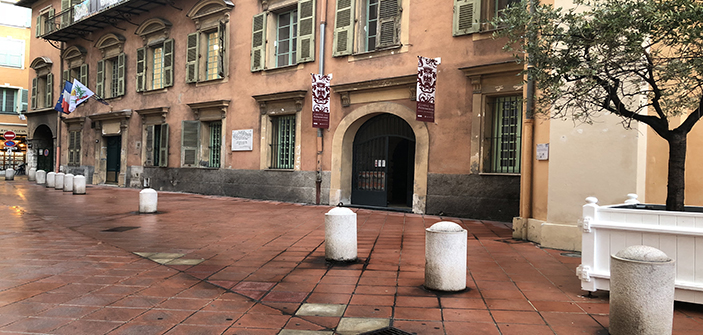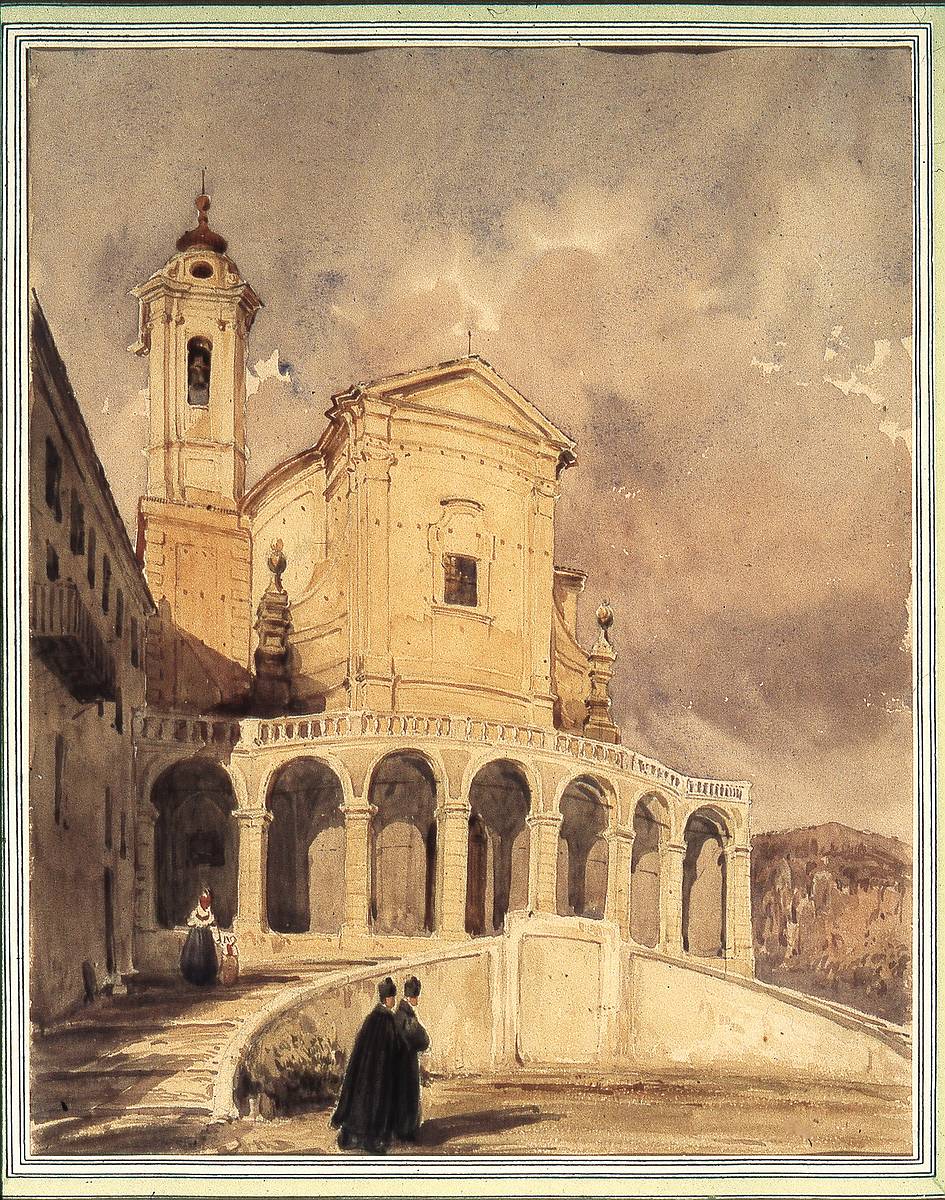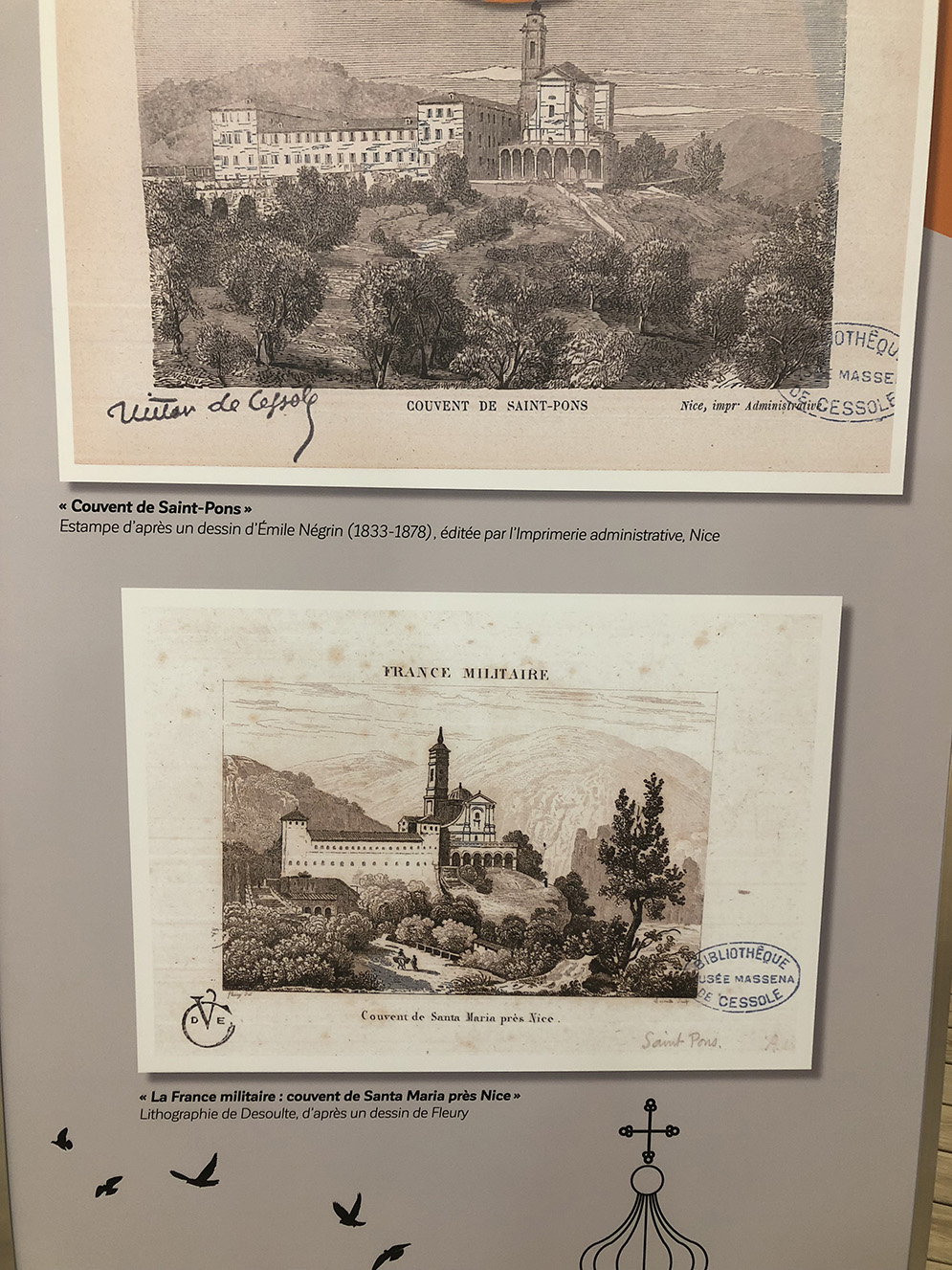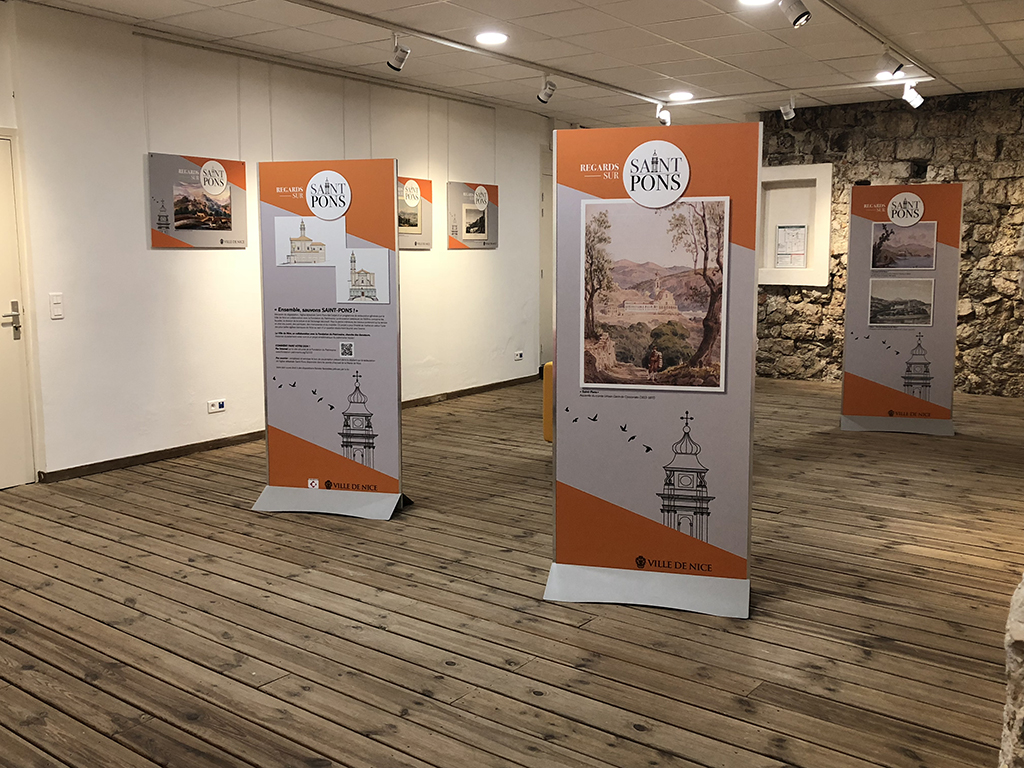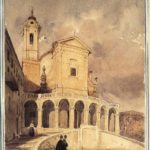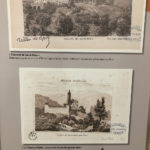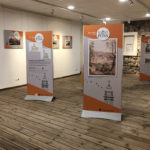Until April 21, visitors can discover the exhibition “A Look at Saint-Pons” at the heritage center — in the former senate palace, at 14 rue Jules Gilly.
History and Architecture of Saint-Pons
During the Middle Ages, the abbey experienced a great period of influence since in 1388, the act of “dedition” of Nice to Savoy was signed.
Subsequently, during the revolution, the monastery underwent French military occupation and was converted into a hospital until 1797. It was sequestered until the Concordat.
In 1855, the “incarceration law” was applied by the Sardinian government so that in 1860, the property of the abbey was transferred to the French state and then to the city of Nice. The church is classified as a historic monument by decree of May 3, 1913.
Closed to the public since 1999, it is now threatened by degradation and is the subject of a general restoration program by the city of Nice, thus enabling it to host orchestral concerts, debates, conferences, or symposia throughout the year.
Exceptionally during the summer of 2016, the walls of the Saint-Pons abbey church were invested by artist Ernest Pignon-Ernest with the presentation of the “EXTASES” series from June 25 to October 2, 2016.
A Look at Saint-Pons
The heritage center highlights the Saint-Pons abbey through 17 photos, one of which shows the plan of the abbey through the eyes of artists and anonymous individuals (Clément Rossal, Urbain Garin de Cocconato, Jean Giletta…) of the 19th and 20th centuries.
Through the numerous watercolors, prints, lithographs, engravings, drawings, and photographs from the collections of the Chevalier de Cessole library of the city of Nice.
Saint-Pons Convent, a print based on a drawing by Émile Négrin (1833-1878), published by the administrative printing office, Nice.
The Military France: Convent of Santa Maria near Nice — Lithograph by Desoulte, based on a drawing by Fleury.
Spectators will be able to admire the abbey and the city of Nice of the era in different forms and times.
These works provide a beautiful aspect of the landscape, the nature, and its reflections beautifully highlight the Saint-Pons church with proof that this church has truly lived with magnificent architecture.
